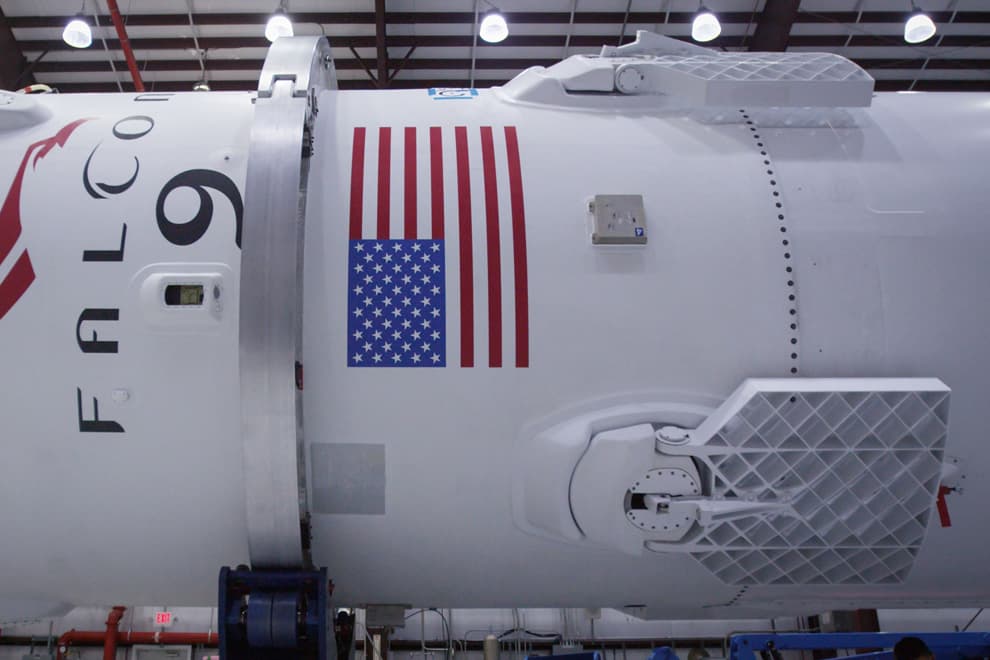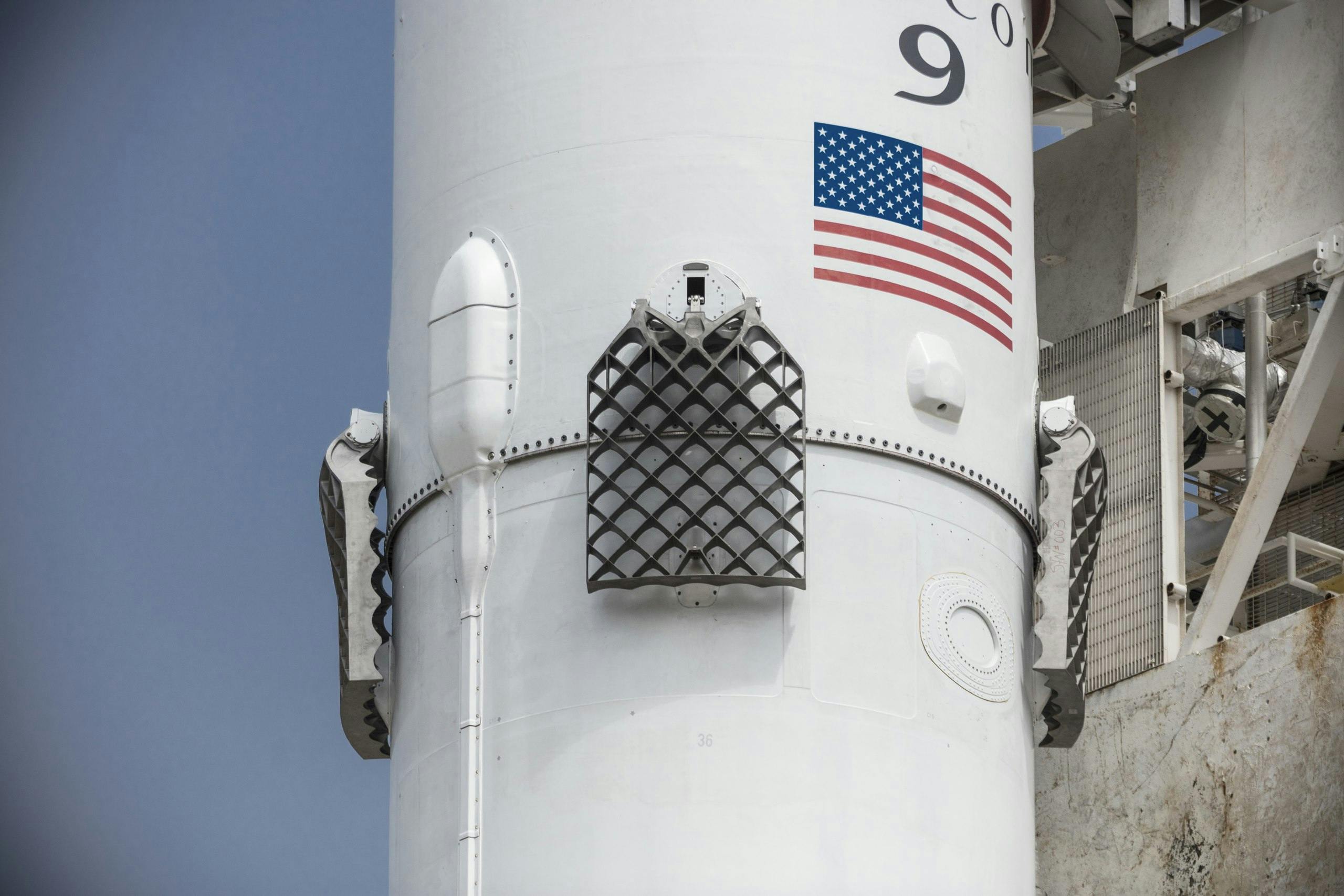Mike Heddes
SpaceX Grid Fin Design
Animation & Interaction ― Dec 22, 2018
SpaceX is the first private company to successfully launch, orbit, and land a rocket. In 2015 SpaceX managed to perform a successful vertical landing with a Falcon 9 first stage for the first time. This was achieved by a number of maneuvers that occur after the first stage separation. The steps are depicted in the Falcon 9 First Stage Reusability Graphic. SpaceX added grid fins to the first stage of the Falcon 9 to provide the ability to roll, pitch and yaw during aerodynamic guidance by producing lift. This makes it possible to change the trajectory during the aerodynamic translation maneuver towards the landing site.
The landing at Landing Zone 1 was the first time SpaceX had successfully landed the rocket’s first stage.
The first version of the grid fin design by SpaceX was made of aluminum and measures 4 by 5 feet. In order to survive the extreme conditions during re-entry, it required a heat shield coating that needed to be applied after each mission. Figure 1 shows the design of the initial grid fins in the contracted state.

SpaceX improved upon their first design and in June 2017 flown their first mission with its new titanium grid fins, shown in Figure 2. The most important improvement is the inherent heat resistance of titanium which eliminated the need for a heat shield coating and allows the grid fins to be “reused indefinitely”.
The improved version of the grid fin is made out of a single piece cast and cut titanium and is able to resist the re-entry heat without shielding.
It is slightly heavier than the shielded aluminum version but has more control authority and can be reused indefinitely with no touch ups.

After decades of stagnation in the space industry, SpaceX stirred up excitement again with its innovations in landing amongst other things, enabling SpaceX to reuse its first stage rocket. To me, this is a fascinating achievement and very inspiring. The grid fin is a critical part of orchestrating the landing of the first stage. Since it is located outside of the rocket, there are sufficient public resources available. Special thanks to Jon Ross for creating a stunning 3D model of the grid fin. An interactive version of the titanium grid fin can be found on the grid fin playground page.